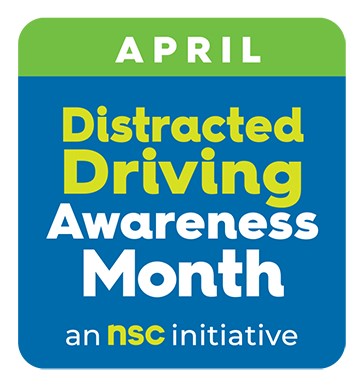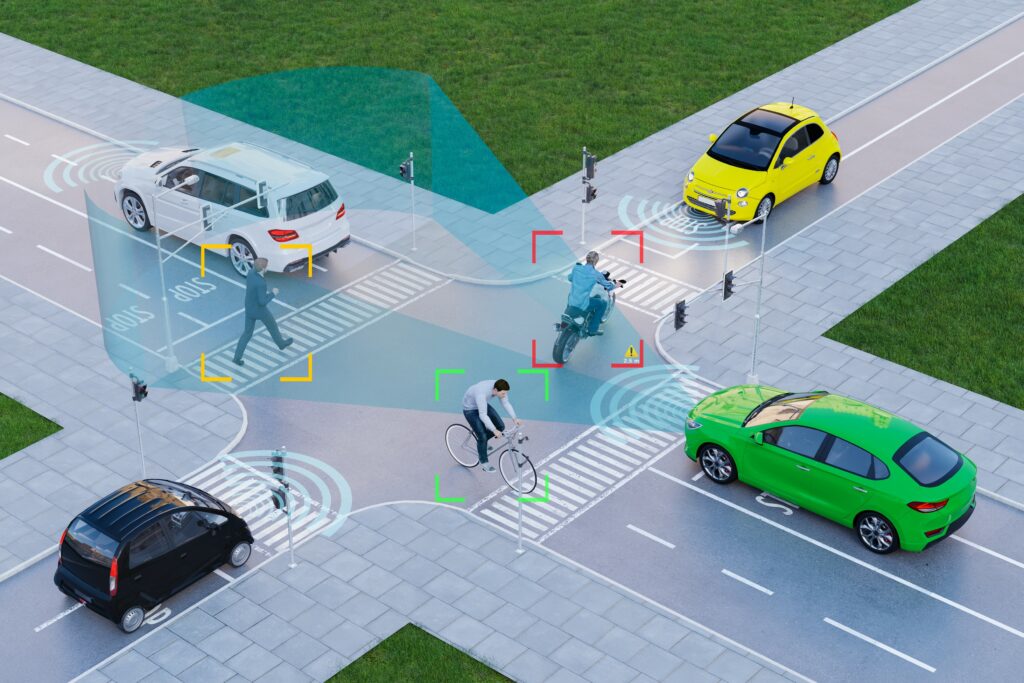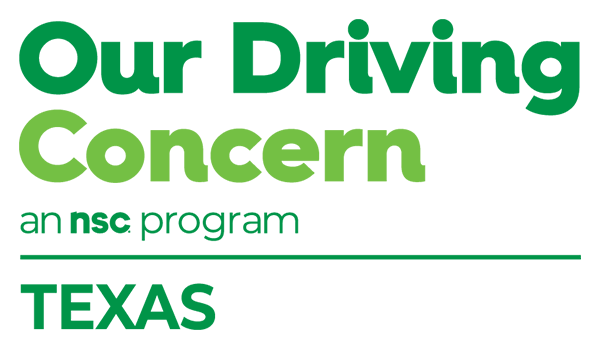Safety Coach
Distraction-Free Driving

Car crashes are the No. 1 cause of death at work, and distracted driving is an all-too-common risk, particularly for pedestrians, road workers and first responders. Every April, the National Safety Council leads Distracted Driving Awareness Month to bring attention to these risks and spread the message that when you’re behind the wheel, your only job is to drive.
Distractions come in three forms: manual, visual and cognitive. An easier way to think of this is if something requires your hands, your eyes or your attention while you’re driving, it’s a distraction. In this context, cellphones are an obvious risk, as they can take your hands off the wheel, your eyes off the road and your mind off the task of driving.
For these reasons, you should always avoid phone use behind the wheel. If you use your phone as a GPS or to play music while you drive, program these apps before you shift into drive. To avoid being tempted by calls, texts and other notifications, set your phone to “Do Not Disturb.” And, if you really need to take a call or check your email, pull off the road, park and check your phone before storing it safely and getting back to your drive.
Cellphones aren’t the only thing fighting for your attention behind the wheel. Plenty of other habits can be just as distracting, from eating or using your vehicle’s touchscreen to interacting with passengers or staring too long at something on the side of the road. Remember: If it requires your eyes, your hands or your attention, it’s a distraction. Distracted driving isn’t just dangerous for you, it’s a serious threat for every person driving, riding, walking or working nearby.
Join NSC in observing Distracted Driving Awareness Month this April and help everyone get home safely. Visit nsc.org/justdrive to access free resources you can share with co-workers, take the Just Drive pledge to avoid distractions, and get a free template to enact or strengthen a safe driving policy in your workplace.
Here are three more ways you can raise awareness of risks associated with distracted driving:
- Play a one-minute distracted driving video at the start of your next team meeting: English or Spanish
- Use free resources in our distracted driving toolkit, which is stocked with posters, Safety Coach cards and Safety Huddle sheets designed to help you lead a brief safety talk
- Award certificates of completion to employees who complete all five modules in our driver behavior micro e-learning series, including one focused on distracted driving
In Texas, one person was injured in a crash every 2 minutes 12 seconds in 2021, according to the Texas Department of Transportation. In the U.S., distraction-affected injury and property damage crashes alone account for hundreds of thousands of dollars in losses every year, according to Injury Facts®.
Take a few minutes this month to protect your business, your employees and their family members through your continuing education and training efforts. Get everyone on board with distraction-free driving.

Tailgate Talk
Technology Solutions
Nearly everyone loves to receive a new gadget as a gift. Likewise, people look for all the bells and whistles when shopping for new vehicles. But do your employees know how to interact with the latest vehicle safety technologies to create safer driving experiences? This question applies whether they commute to the office or drive delivery trucks on company time.
Get dramatic and start your next safety talk with this exclamation: My Car Does What???
Then, share this two-minute video to further pique interest: Welcome to MyCarDoesWhat.org – Learn about Modern Car Safety Features!
MyCarDoesWhat is a program of the National Safety Council that focuses on safer driving with technology. New videos and resources recently have been added to highlight the latest vehicle safety features and break down what your vehicle can – and cannot – do. Use these tools to provide continuing education at your location:
- Safety features (including forward collision prevention)
- Resources (including videos, graphics and games)
In the U.S., rear-end incidents account for nearly three out of 10 crashes that result in serious injuries or fatalities. One of the most popular safety features in vehicles today is the back-up camera. These cameras display the blind zone directly behind your vehicle and can help reduce crash incidents.
Watch this 30-second video to review how back-up cameras work. Talk about potential shortcomings, including how lenses and sensors can become obstructed during inclement weather. Be sure to include this reminder: Today’s safety features are meant to assist drivers, not replace them.
Before backing:
- Do a 360-degree walk around your vehicle
- Check your mirrors and check your surroundings
- If you’re on the job, use a spotter and follow hand signals
- After shifting into reverse, check the video monitor to ensure the coast is clear
- Check surroundings again and back slowly while looking over your shoulder
That’s one example of how you can talk about vehicle technology and build better driver safety behavior. Next time, think about discussing features that help drivers monitor blind spots or detect if their vehicle is drifting out of its lane. Technology can be a safety game-changer. The trick is to ensure everyone understands the latest and greatest. New gadgets are only good if you know how to use them.

